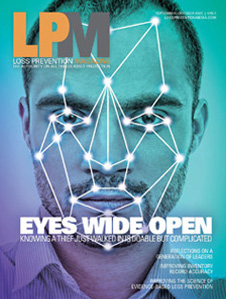This article originally appeared in Loss Prevention Magazine.
It’s not news that 2020 has been a chaotic year. From the global COVID-19 pandemic beginning in March to the protests across the country in response to the death of George Floyd, a Black man who died in police custody in Minneapolis at the end of May, it seems impossible to predict what might happen next. But as we’ve seen so many times in the past, history often repeats itself. And this isn’t the first time that widespread civil unrest has taken hold of our country—with long-lasting results.
With 2020 being an election year, many political experts and media outlets have been hyperfocused on how these atypical current events will affect the presidential election this November. However, the United States was in a similar situation only half a century ago, during the year of the 1968 presidential election.
Unlike what we’ve seen in the protests against racism and police brutality this year, the protests in 1968 were far more violent and widespread. As civil unrest descended into chaos and violence, the political response focused on the idea of “law and order,” previously limited to more regional politics in the Deep South, making criminal justice an essential policy platform on a national scale. The Republican presidential nominee based his campaign on law and order, leading to a wave of repressive criminal-justice policies that affected politics for decades after the 1968 election. This newly introduced policy platform pressured politicians of both parties to feature law and order in their campaigns in order to be elected.
The Link Between Riots and Elections
Political experts have found that when civil unrest devolves into chaos and violence, it generates the wrong kind of attention and provokes a hostile response, as seen when Nixon based both his campaign and his presidency on his law and order stance. These experts have also uncovered the direct link between public awareness of race-related civil unrest and violence (such as riots and looting) and a decline in the Democratic vote share in both 1968 and 1972.
Many political observers expect that President Donald Trump will heavily feature law and order in his campaign for reelection. The president already got started with a tweet in May, along with his use of the phrase “when the looting starts, the shooting starts,” which originated with third-party conservative and 1968 presidential candidate George Wallace.
A political scientist from George Mason University said to the Washington Post, “One of the things that I think a lot of people don’t realize is that urban rioting in American history has almost always helped conservative forces.” With the resurgence of law and order in political discussions, I think this year will continue to have some surprises in store for us.
What Does This All Mean for Retailers?
Something else that isn’t news: the retail industry has taken a huge blow during the coronavirus pandemic. Many retailers have not been deemed essential businesses, so they had to close operations for at least a couple of months starting in March as the United States instituted measures to combat the spread of COVID-19.
Early in the pandemic, the National Retail Federation (NRF) found that more than nine in ten customers changed their shopping habits in response to the pandemic, and more than half of customers chose to shop online for products they would normally buy in store. Though retail has had to adapt to other industry changes, like the shift to online retail and greater digitization, there isn’t a precedent to guide how we can adapt our businesses to the changes brought on by a pandemic.
With the protests that began in late May, retailers faced another issue that impacted them more than other industries. Civil unrest—such as riots and looting where destruction of property is the main result—heavily impacts retailers of all sizes. As retailers closed locations or boarded up their stores to protect their businesses from the violence, major retailers like Target, Walmart, and Nordstrom conveyed their support for the movement, rather than outright condemning the damage to their businesses.
The NRF addressed looting in a statement in early June, focusing on the history of racial injustice in America and supporting peaceful protests while also decrying the negative impact of “the actions of a few.”
Though major retailers have largely been supportive of the protests, they often aren’t the ones who suffer the worst consequences when civil unrest becomes violent. If smaller retail stores are damaged by riots or have merchandise stolen by looters, their entire businesses could be compromised. Though many business owners have insurance, the money they receive from their insurance companies might not be enough to repair all the damages, let alone help them recoup from sales lost when they had to stop operations to protect their employees’ safety and repair any damages.
As we’ve seen this year, small businesses have also been hit the worst by COVID-19. In a study published in July, researchers found that over 40 percent of small businesses have temporarily closed because of COVID-19, and overall employment by small businesses has declined by 39 percent since January.
As we are approaching the end of 2020, I believe there are going to be a lot of changes, not only within the retail industry but also in the political world. The digital transformation will continue to accelerate at a rapid pace. Retail has met and overcome many obstacles in recent decades, and I’m confident that we will continue to see that resilience in the future.

Tom’s column is featured in every issue of Loss Prevention Magazine. To subscribe to the printed version of the magazine and enjoy other great content, visit losspreventionmedia.com.

